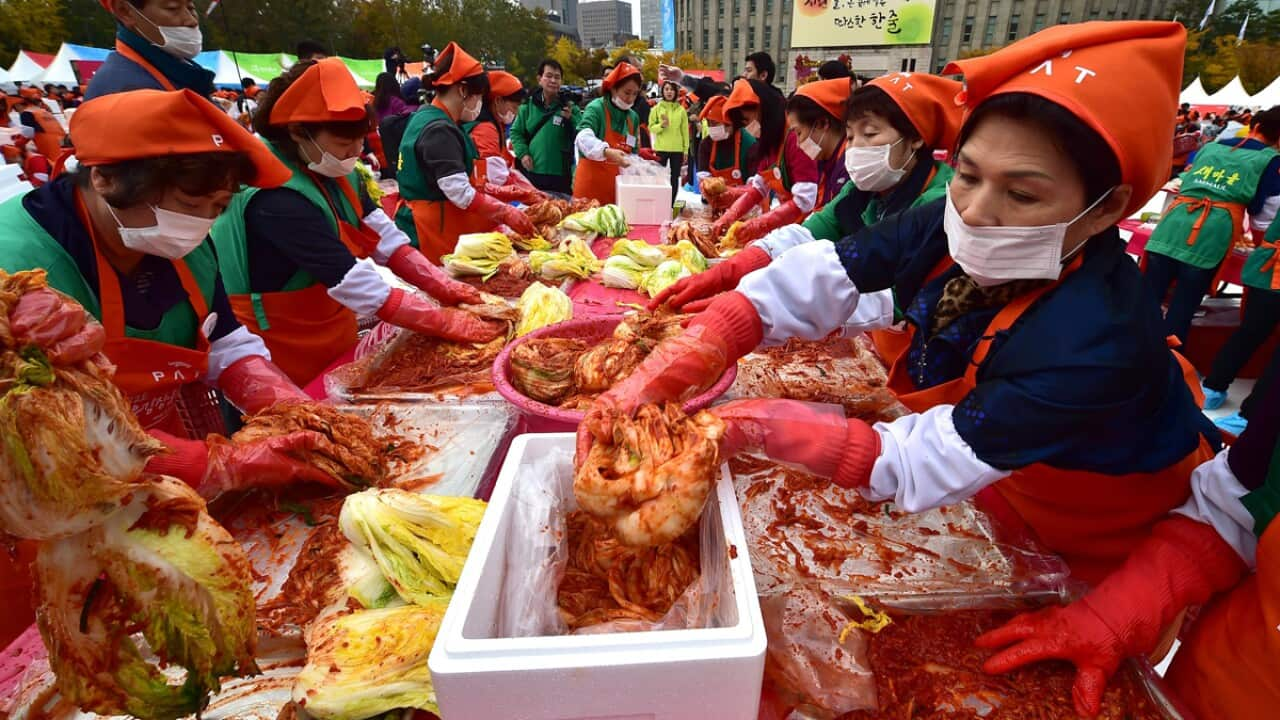More than 2300 people have gathered at the fourth to make kimchi. This annual festival sees its visitors getting hands on at Seoul Plaza’s red square all in the name of charity.
Kimchi is a classic Korean side dish of salted and fermented vegetables. Usually, cabbage or radish is soaked in fermented red chilli paste, garlic, ginger, fish sauce and fermented seafood or bean paste.
Seoul City organises the festival, which ran from 3-5 November. In the first day alone about 60 tonnes (60,000 kilos) of kimchi was made with the organisers aiming to make 120 tonnes of kimchi across the three-day event, according to . The festival is set to celebrate kimjang, the tradition of making kimchi, and allow visitors to directly experience it. All that kimchi will then be distributed to the poor and less-fortunate across Seoul. Besides the actual kimjang, the weekend programming included cooking classes, a kimchi market and a youth–run kimchi food court, as well as kimchi-dressed characters and a playground.
Kimjang is such an important part of the country’s identity that the United Nations Educational, Scientific and Cultural Organization (UNESCO) added the making and sharing of kimchi to its in 2013, a list comprised of about 100 traditional events from around the globe.
This tradition brings people and entire neighborhoods together to transform hundreds of cabbages into a source of nutritious food and kimchi is such a major part of Korean life that this festival, and even a devoted museum, celebrates it.
Kimchi and kimjang culture is a that has continued for thousands of years and is still being practiced in the 21st century. Although cabbage and radish are the most common, Korea has more than of kimchi and according to the World Institute of Kimchi, South Koreans consumed about of kimchi in 2016.







